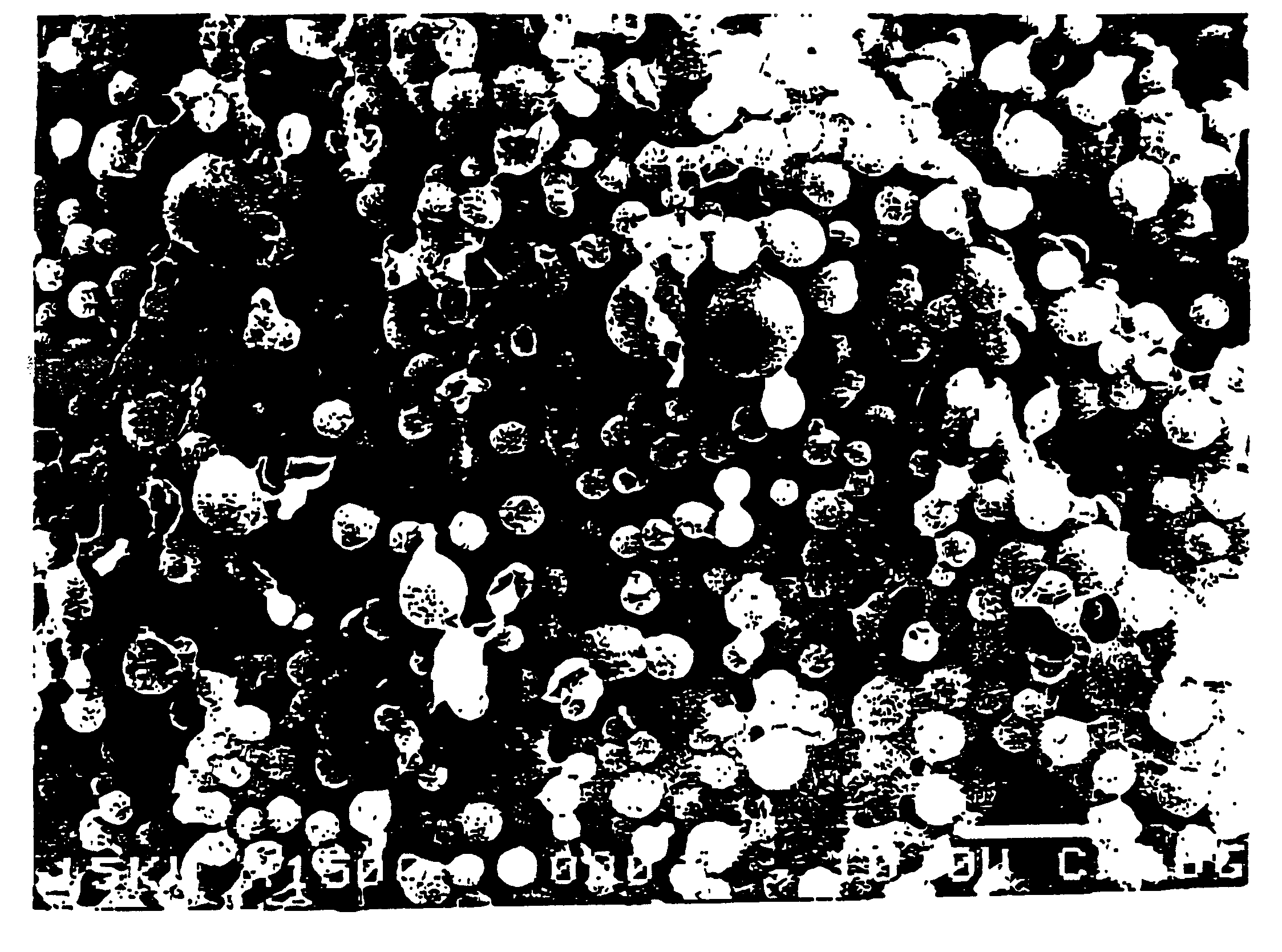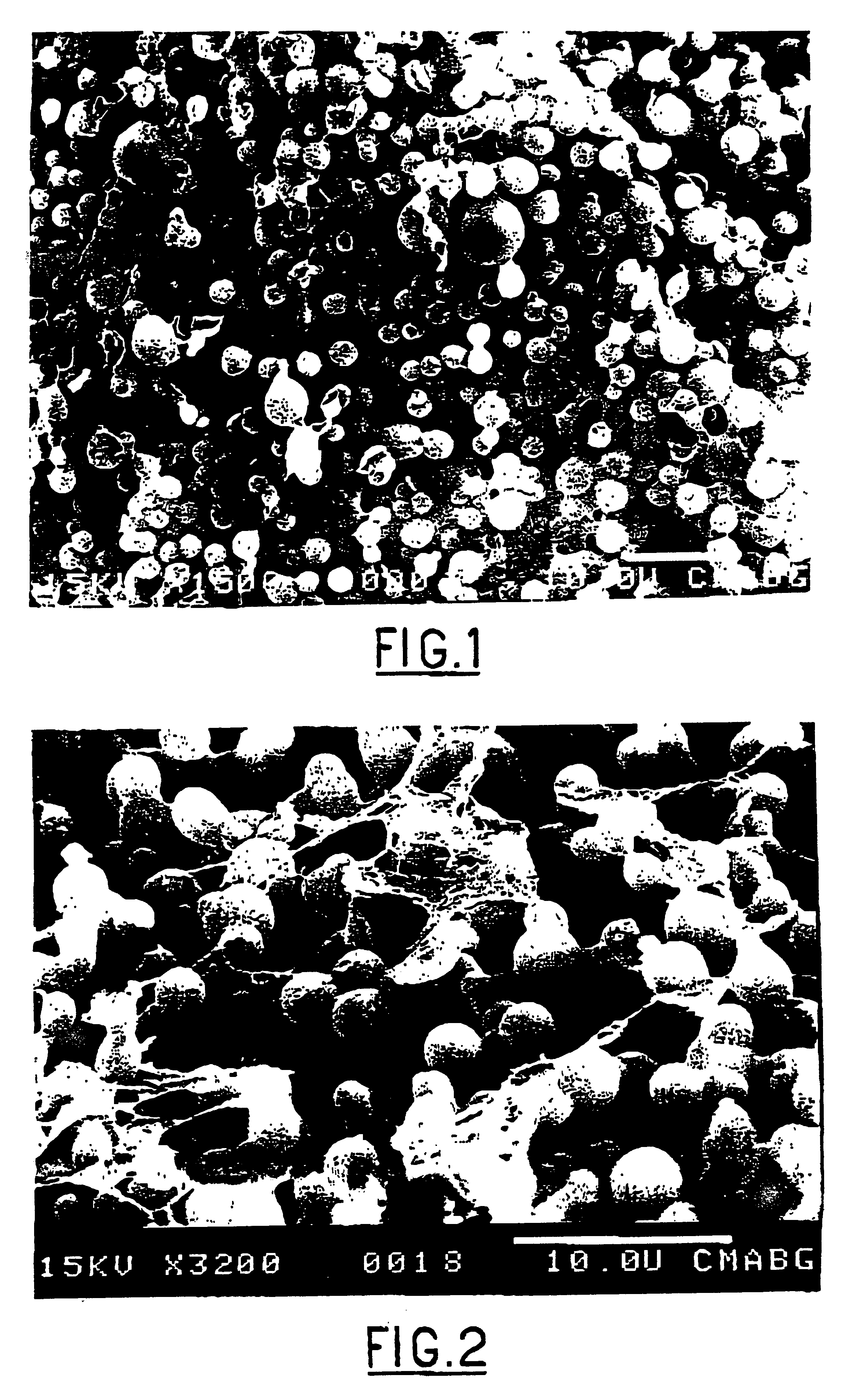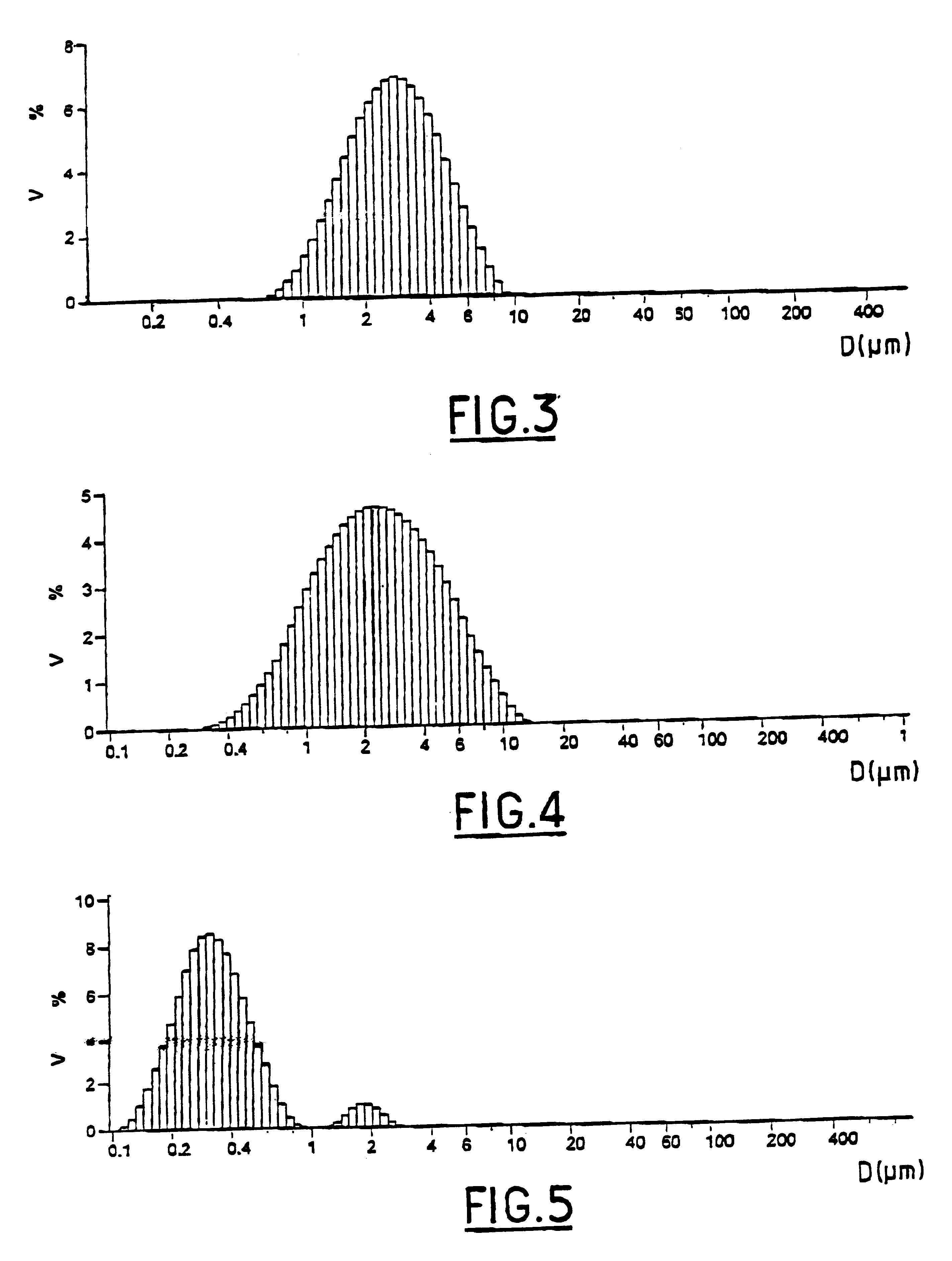Composite gel microparticles as active principle carriers
- Summary
- Abstract
- Description
- Claims
- Application Information
AI Technical Summary
Benefits of technology
Problems solved by technology
Method used
Image
Examples
example 1
50 / 50 Poly(LEUCINE-SODIUM GLUTAMATE) Random Synthesis
STEP 1): COPOLYMERIZATION OF NCA-LEU AND NCA-GLU(OMe): 50 / 50 POLY(LEU-CO-GLU(OMe)):
15.0 g of methyl glutamate N-carboxyanhydride (NCA-Glu(OMe): 0.08 mol) and 12.5 g of leucine N-carboxyanhydride (NCA-Leu: 0.08 mol) are introduced, under a stream of nitrogen, into a 1 l reactor fitted with a glass stirrer, a nitrogen inlet and an outlet connected to a bubbler. 381 ml of dioxane are added and the reaction medium is brought to 40.degree. C.
After dissolving the NCA, 24 ml of water are added, followed by 0.22 ml of triethylamine (i.e. 1 mol % relative to the NCA). The polymerization is monitored by IR by observing the disappearance of the carbonyl bands at 1860 and 1790 cm.sup.-1. The polymerization time ranges between 1.5 h and 3 h depending on the composition of the monomers. After the bands have totally disappeared, the reaction medium is diluted with 380 ml of dioxane and then homogenized for 3 h at ambient temperature. The copolym...
example 2
Synthesis of the 50 / 50 Poly(LEU-B-GLU(ONa)) Diblock
15.0 g of NCA-Glu(OMe) (0.08 mol) and 180 ml of dioxane are introduced into a 1 1 reactor with stirring. After dissolution, 180 ml of toluene are added and the medium is brought to 60.degree. C. The IR spectrum of the solution is acquired, after which 0.156 g of benzylamine (1.58 mol % / NCA) is added. The reaction medium rapidly becomes cloudy and, after 40 minutes, the characteristic bands at 1860 and 1790 cm.sup.-1 have disappeared.
After one hour, a solution of 12.5 g of NCA-Leu (0.08 mol) in a dioxane / toluene mixture (15 ml of each) is introduced. Stirring is continued for 18 h (this duration was not optimized). The carbonyl bands have by then disappeared.
100 ml of dioxane are added and the reaction medium is homogenized for 1 h. The copolymer is precipitated from 3 l of absolute ethanol with vigorous stirring. It is washed with 1 l of ethanol, filtered off, drained and finally dried at 50.degree. C. after vacuum overnight.
The mas...
example 3
Synthesis of the 25 / 50 / 12 Poly(GLU(ONa)-LEU-GLU(ONa)) Triblock
7.5 g of NCA-Glu(OMe) (0.04 mol) and 180 ml of dioxane are introduced into a 1 l reactor with stirring. After dissolution, 180 ml of toluene are added and the medium is brought to 60.degree. C. The IR spectrum of the solution is acquired, after which 0.156 g of benzylamine is added.
After the monomer has totally disappeared, a solution of 12.5 g of NCA-Leu (0.08 mol) in a dioxane / toluene mixture (15 ml of each) is introduced. Stirring is continued for 18 h. Next, a further 7.5 g of NCA-Glu(OMe) (0.04 mol) are added and are allowed to react for 12 hours. 100 ml of dioxane are added and the reaction medium is homogenized for 1 h.
The copolymer is precipitated from 3 l of absolute ethanol with vigorous stirring. It is washed with 1 l of ethanol, filtered off, drained and finally dried at 50.degree. C. under vacuum overnight.
The mass of product recovered is 19.4 g (yield=95%).
.sup.1 H NMR (d-trifluoroacetic acid): 0.85 ppm (CH....
PUM
| Property | Measurement | Unit |
|---|---|---|
| Time | aaaaa | aaaaa |
| Time | aaaaa | aaaaa |
| Time | aaaaa | aaaaa |
Abstract
Description
Claims
Application Information
 Login to View More
Login to View More - R&D
- Intellectual Property
- Life Sciences
- Materials
- Tech Scout
- Unparalleled Data Quality
- Higher Quality Content
- 60% Fewer Hallucinations
Browse by: Latest US Patents, China's latest patents, Technical Efficacy Thesaurus, Application Domain, Technology Topic, Popular Technical Reports.
© 2025 PatSnap. All rights reserved.Legal|Privacy policy|Modern Slavery Act Transparency Statement|Sitemap|About US| Contact US: help@patsnap.com



